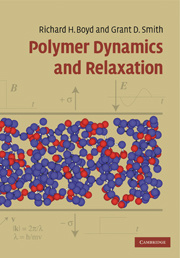Description
Polymer Dynamics and Relaxation
Authors: Boyd Richard, Smith Grant
A detailed discussion on the different types of relaxation processes and the experimental methods used to study them.
Language: English
Approximative price 53.50 €
In Print (Delivery period: 14 days).
Add to cart
Polymer Dynamics and Relaxation
Publication date: 08-2010
Support: Print on demand
Publication date: 08-2010
Support: Print on demand
Approximative price 123.79 €
Subject to availability at the publisher.
Add to cart
Polymer dynamics and relaxation
Publication date: 09-2007
266 p. · 17x24.4 cm · Hardback
Publication date: 09-2007
266 p. · 17x24.4 cm · Hardback
Description
/li>Contents
/li>
Polymers exhibit a range of physical characteristics, from rubber-like elasticity to the glassy state. These particular properties are controlled at the molecular level by the mobility of the structural constituents. Remarkable changes in mobility can be witnessed with temperature, over narrow, well defined regions, termed relaxation processes. This is an important, unique phenomenon controlling polymer transition behaviour and is described here at an introductory level. The important types of relaxation processes from amorphous to crystalline polymers and polymeric miscible blends are covered, in conjunction with the broad spectrum of experimental methods used to study them. In-depth discussion of molecular level interpretation, including atomistic level computer simulations and applications to molecular mechanism elucidation, are discussed. The result is a self-contained approach to polymeric interpretation suitable for researchers in materials science, physics and chemistry interested in the relaxation processes of polymeric systems.
Preface; Part I. Methodology: 1. Mechanical relaxation; 2. Dielectric relaxation; 3. NMR spectroscopy; 4. Dynamic neutron scattering; 5. Molecular dynamics (MD) simulations of amorphous polymers; Part II. Amorphous Polymers: 6. The primary transition region; 7. Secondary (subglass) relaxations; 8. The transition from melt to glass and its molecular basis; Part III. Complex Systems: 9. Semi-crystalline polymers; 10. Miscible polymer blends; Appendix 1. The Rouse Model; Appendix 2. Site models for localized relaxation; Index.
© 2024 LAVOISIER S.A.S.




